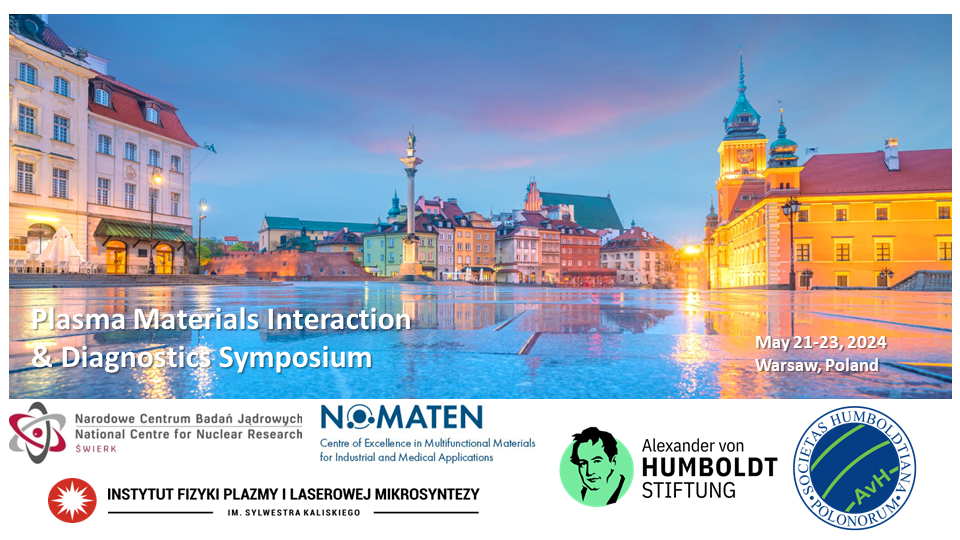Speaker
Description
Stellarators offer a relatively straightforward route to steady state fusion power operation. Future reactors, such as DEMO, are expected to operate quasi-continuously with divertor heat fluxes as low as 5 MW/m2 [1]. Such a low level of acceptable incoming heat flux leads to the requirement that most of the power leaving the plasma has to be radiated away by the plasma impurities and to operate in the so-called detached regime, where the divertor target plates are protected from the hotter plasma by a dense layer of cold (Te < 5 eV) plasma. One of the objectives of the Wendelstein 7-X research is to achieve and optimise the long pulse scenarios. The recently installed high heat flux divertor, consisting of water-cooled CFC target elements, can handle power loads of up to 10 MW/m2 in continuous operation, which for W7-X plasmas means up to 30 minutes.
During the W7-X operational phase OP1.2, which took place in 2017-2018, 100 s of discharge were achieved with the divertor attached [2], while about 30 s were achieved with the divertor detached [3]. The experiments performed showed that a robust detachment scenario allows to reduce the peak heat flux by almost an order of magnitude, and no significant increase in impurity concentration was observed.
In the present campaign, we were able to significantly extend these scenarios with plasma durations of up to 8 min in the attached state and up to 2 min with almost completely detached divertor. These plasmas were heated by electron cyclotron resonance heating (ECRH) with an input power of 3.5 MW in the attached scenario and 5 MW in the detached scenario.
In the attached case, the line-integrated density was set to approximately 51019 m-2 and kept constant throughout the discharge with the feedback system. The diamagnetic energy was kept at a level of about 430 kJ, and the ion and electron temperatures were 1.5 keV and 2 keV, respectively. Such a scenario did not lead to any overloading of the surface of the components facing the plasma.
In the case of detached plasmas, a more sophisticated scenario had to be developed. Both intrinsic (mostly carbon) and seeded (neon) impurities were used to keep the plasma radiation level at the frad above 0.8, which is a prerequisite for detachment. The plasma density was set at a level of 1.31020 m-2, resulting in both ion and electron temperatures at the level of 1.5 keV and a diamagnetic energy of about 0.6 MJ. Reduced heat fluxes to the divertor during the entire detached phase resulted in low surface temperatures (150-160°C). As a consequence, no significant increase of impurity concentration occurs with the cooler plasma boundary, and the Zeff stayed below 1.5. In the PHA spectra, no significant increase of carbon or oxygen lines was observed during the discharge suggesting stable plasma during the entire discharge.
[1] N. Asakura et al., Nuclear Fusion 57, 126050 (2017).
[2] T. Klinger et al., Nuclear Fusion 59, 112004 (2019).
[3] M. Jakubowski et al., Nuclear Fusion 61, 106003 (2021).

